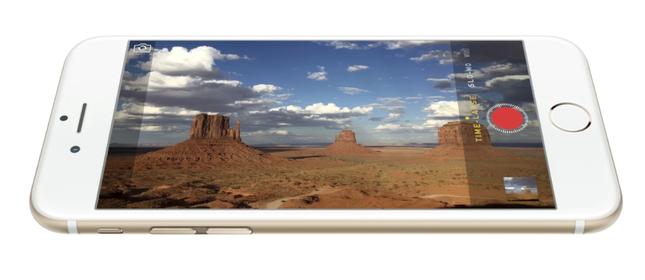The most readily-apparent differences between the iPhone 6 and its predecessor are in form: where the iPhone 5 is a little boxy, the iPhone 6 is slim and trim, striking an impressive balance between substantiality and lightness of being. Though 17 grams heavier than its predecessor, the phone’s weight increase is balanced in such a way that the feel of the iPhone 6 is more reassuring than that of the iPhone 5.
The 4.7-inch display on the iPhone 6 (up from 4 inches on the iPhone 5), is just enough of an increase to deliver much-needed real estate without inflating the iPhone 6 to a degree that would require extra space to carry or a closer eye to look at the screen. In terms of display quality, though, the odd choice of a 1334 x 750 resolution for the iPhone 6 doesn’t change the pixel density one bit; the iPhone 5, 5c and 5s all sport the iPhone 6’s 326ppi.
In terms of functionality, the iPhone 6 offers little in the way of earth-shattering improvements. Looking past the changes in iOS 8, the hardware upgrades seem to have a negligible impact on performance, despite the inclusion of the much-touted Apple A8 processor, which replaces the A7 in the iPhone 5s. Apple claims the A8 is 25 percent faster and has 50 percent better graphics than the A7, though the average user likely won’t notice a huge difference with today’s mainstream apps.
With the iPhone 6, Apple has stuck by the 1GB RAM allotment of the iPhone 5 in a nod to prolonging battery life. However, RAM bottlenecks tend to account for more performance degradations in the end-user experience than underpowered processors.
And what about battery life? According to Apple’s estimates, there is a significant improvement in the audio category; you’ll get an additional 10 hours of music time out of the iPhone 6, up to 50 total hours, compared to the 40 hours estimated for the iPhone 5s. Across the other categories – video, Wi-Fi, LTE and 3G browsing – the increases are token and insubstantial
The majority of the bells-and-whistles associated with the iPhone 6 come via iOS 8 and are as-yet-unrealized in their full potential. Apple Pay, the new near-field communications (NFC) technology incorporated into the iPhone 6 that will theoretically allow iPhone 6 owners to use their devices as a tap-and-go credit card, is still in its infancy. Metal, Apple’s new technology geared towards mobile game developers, will supposedly allow the creation of more immersive and richly detailed games that take advantage of the iPhone 6’s new hardware. Apps that leverage Metal will take time to become available, though.
The Takeaway: Wait and see. The iPhone 6 and iOS 8 have real potential, both individually and as a team. But unless you dislike the iPhone 5 for aesthetic reasons or are one of those who simply must have the latest and greatest on day one, my advice would be to wait a few months to let Apple work out the unavoidable new-release kinks and give the wider tech world a chance to capitalize on the new development features.


